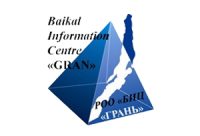RUSSIA, ASIA
Lake Baikal
Lake Baikal in southeastern Siberia is the world oldest, deepest and by volume larges freshwater lake. Baikal is one of Russia’s most iconic sites: high mountains surrounding the lake include the Baikal Mountains on the western shores, the Stanovoi Highlands in the northeast, the Barguzin Mountains and the Ulan-Burgassy Mountains on the eastern shore, the Chamar-Daban Mountains in the south and the East Sayan, which rises south-west of the lake. The lake has a surface of more than 31.000 km², with a length of 673 km. The lake feeds from over 300 rivers and streams. Angara river is the only outflow in the south of the lake. Due to the enormous volume of water in the lake, the water temperature barely rises above 10 °C even in July and August. From around mid-November to the beginning of May, the surface is usually completely frozen.
What makes it special
Lake Baikal is a lake of superlatives: At more than 25 million years old, it is world’s oldest lake and with its maximum depth of 1.673 meters, Lake Baikal is the deepest lake in the world, and the largest freshwater lake in the world by volume.
Protection status
· Ramsar Site 682, Wetland of International Importance
· UNESCO World Heritage Site
· Nature Sanctuary - Zakaznik

Biodiversity
Lake Baikal boasts diverse fauna, including the endemic Baikal Seal and a range of land mammals like Brown Bears, Wolves, and Moose. The lake hosts 236 bird species, with the Baikal Teal and Baikal Bush Warbler being widespread in Asia. The unique fish population includes two species of grayling found only in Baikal, and the commercially important endemic omul whitefish. The invertebrate fauna is rich, featuring over 350 species of endemic amphipods, 90% of ostracods being endemic, and almost 150 species of freshwater snails. Sponges, including the unusually large Lubomirskia baicalensis, constitute 44% of the benthic animal biomass.

Local Communities
Lake Baikal first attracted indigenous Siberian peoples to its shores thousands of years ago. The Buryats eventually became the most prominent group in the area and imbued Lake Baikal with sacred status: to this day, Buryat shamans perform rituals at the lake.
Threats
Lake Baikal faces serious environmental threats, including pollution, particularly from mass tourism. One of the environmental consequences of tourism is the pollution of the shallow coastal area by household waste and sewage. Each summer, there is a massive proliferation of non-native algae, which displaces native species of animals and plants, such as the omul fish or endemic sponge species.

Our Work
Nature Protection Association “Firn” and the Baikal Information Centre GRAN in Ulan-Ude work on the protection of Lake Baikal with a focus on the dissemination of ecological information and environmental education in the Baikal region.
Baikal Information Centre GRAN



